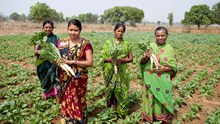
Malta, commonly known as sweet orange (Citrus sinensis), is a highly favored citrus fruit in India, known for its juicy sweetness and nutritional value. Cultivating Malta can be a profitable venture, but it requires knowledge of its climatic needs, soil conditions, planting methods, and ongoing crop management. This guide covers all the essential aspects for successful Malta cultivation tailored to Indian conditions.
Climate and Soil Requirements
Malta trees thrive in moderate climates with temperatures ranging from 10°C to 30°C. The ideal sowing temperature lies between 10°C and 25°C, while harvesting is best when temperatures reach 30°C to 35°C. Annual rainfall around 500 mm is suitable, but supplemental irrigation is important in drier regions.
States like Punjab, Haryana, Himachal Pradesh, Rajasthan, and Uttar Pradesh have favorable conditions for Malta cultivation. The soil must be well-drained, loamy, and slightly acidic to neutral, with a pH ranging from 6.0 to 8.0. Good organic matter content and proper drainage are critical to prevent diseases such as root rot and to promote healthy root development.
Popular Malta Varieties
Several Malta varieties are cultivated in India, each differing in fruit size, shape, flavor, and harvest time. The Jaffa variety produces large, round fruits with a yellow-orange peel and averages about 54 kg of fruit per tree. Mousambi is medium-sized with sweet, low-acid juice, yielding approximately 40 kg per tree. Valencia Late is oval-shaped, ripening later in the season (around February), with yields similar to Mousambi.
Blood Red features red pulp and mild acidity, with about 43 kg per tree. The Pineapple variety is medium-sized and juicy, growing on trees with a spreading habit, and yields around 38 kg per tree. Choosing the right variety depends on your local climate, soil type, and market demand.
Land Preparation and Planting
Proper land preparation is fundamental to good tree establishment. Begin with deep ploughing and cross ploughing to loosen the soil thoroughly. Dig pits approximately 1 cubic meter in size, spaced 5 meters apart both ways to allow ample room for growth. These pits should be enriched by mixing 15 to 20 kilograms of well-decomposed farmyard manure and 500 grams of single superphosphate.
The best time to plant is during cooler months, either early spring or late autumn to avoid heat stress on young saplings. Use healthy, certified budded plants grafted onto rootstocks such as Rangpur lime or rough lemon, which improve disease resistance and adaptability. When planting, ensure the graft union remains above the soil surface to prevent rootstock sprouting, which can affect fruit quality.
Irrigation and Fertilization Practices
Irrigation is crucial, especially during the dry season and the initial years after planting. Deep watering is recommended to encourage roots to grow deeper and establish well. However, avoid waterlogging since excessive moisture can cause root diseases. Fertilization schedules vary by tree age. For young trees (1–3 years), apply 5 to 20 kg of farmyard manure and 100 to 300 grams of urea per tree annually.
As the trees mature (4–6 years), increase these amounts to 25–50 kg of manure and 400–500 grams of urea. Fully grown trees (7 years and above) require 60 to 100 kg of manure and 600 to 1600 grams of urea. Apply farmyard manure in December and split urea applications between February and April-May to optimize nutrient uptake and tree growth.
Pruning and Training
Proper pruning shapes the tree, improves airflow, and reduces disease incidence. In the early growth stages, remove shoots up to 50–60 cm from the ground to encourage a strong trunk. Maintain an open center by pruning branches to allow sunlight penetration and ventilation, which helps in controlling fungal diseases. Regularly remove water suckers and dead or diseased branches to maintain tree health and vigor.
Flowering and Fruit Setting
Flowering can be naturally induced or enhanced using Bahar treatments, which apply controlled stress to the trees. In India, three common Bahar seasons are followed: Ambe Bahar (December–January), Mrig Bahar (June–July), and Hastha Bahar (September–October). During these periods, imposing a stress phase lasting about 20 to 25 days, often by withholding water or nutrients, stimulates flowering and improves fruit set. Managing flowering time carefully helps in synchronizing harvests and optimizing yields.
Pest and Disease Management
Malta cultivation is vulnerable to pests such as leaf miners, which damage young leaves, and citrus psylla, which sucks sap causing leaf curling and weakening the tree. Scale insects, aphids, and mealy bugs also sap nutrients from the plant and attract sooty mold. Control measures include the use of insecticides like monocrotophos, carbaryl, neem oil, or synthetic pyrethroids, selected based on pest type and severity.
Diseases such as citrus canker, which causes lesions on leaves and fruits, can be managed with copper-based fungicides or streptomycin sprays. Gummosis manifests as gum oozing from the bark and requires fungicidal treatment with products like metalaxyl combined with biological agents such as Trichoderma viride.
Powdery mildew appears as white fungal growth on leaves and fruit and responds well to carbendazim sprays. Black spot disease leads to dark spots on fruits and is controlled by copper fungicides. Regular monitoring, timely treatment, and integrated pest management are key to minimizing crop losses.
Harvesting and Post-Harvest Management
Determining the right harvest time is vital to ensure the fruit’s sweetness and market quality. Generally, fruits are harvested when the ratio of total soluble solids (TSS) to acidity reaches about 12:1. Depending on the variety, harvesting occurs mainly from mid-January to mid-February.
After picking, fruits should be washed thoroughly and disinfected by dipping in chlorinated water (about 2.5 ml chlorine per liter) to reduce microbial contamination. A wax coating, such as Citrashine, enhances the fruit’s appearance and shelf life. Fruits should then be shade-dried before packaging in ventilated boxes to prevent spoilage during storage and transportation.
Additional Tips for Successful Cultivation
Maintaining weed control around the orchard is essential to reduce competition for nutrients and water. Herbicides such as glyphosate can be used carefully to manage weeds without harming the trees. Intercropping with legumes like berseem or lucerne during the juvenile phase can improve soil fertility through nitrogen fixation and provide additional income. Regular training and monitoring of the trees help maintain their shape, improve fruit quality, and reduce pest and disease risks.
Economic Potential of Malta Cultivation
With proper management, Malta cultivation can be a profitable enterprise for Indian farmers. Improved cultivation practices, pest and disease control, and value addition through collective marketing have helped farmers increase income substantially. For example, farmers in Uttarakhand have benefited greatly by forming producer groups that facilitate better access to markets and fair pricing. With the growing demand for citrus fruits domestically and for export, Malta farming holds promising opportunities for entrepreneurship and rural development.
Malta cultivation in India offers a sustainable opportunity with proper climate, soil, planting, irrigation, fertilization, and pest management. Farmers following best practices can achieve healthy yields. Embracing new technologies and market trends ensures continued success and profitability in growing this nutritious citrus fruit.
















